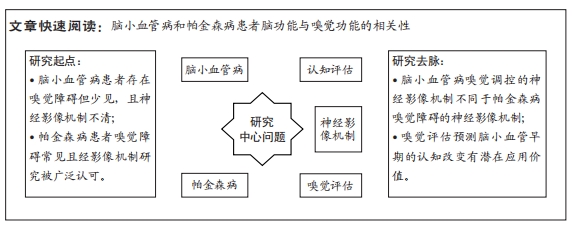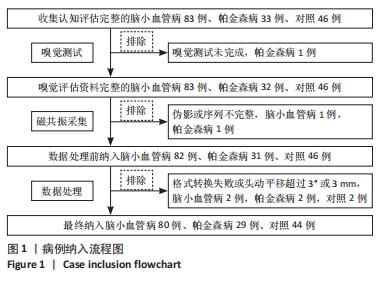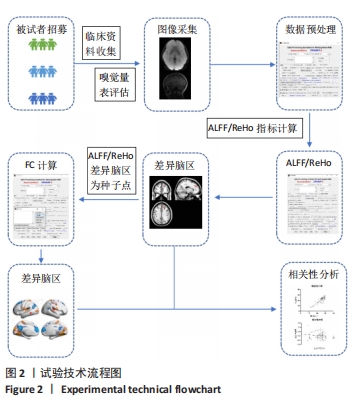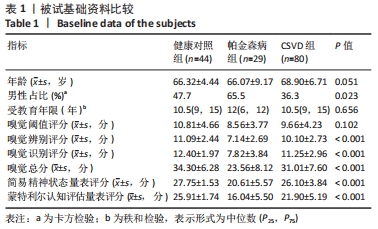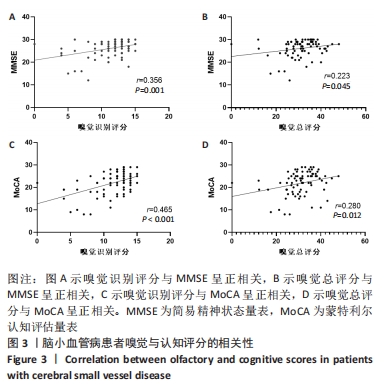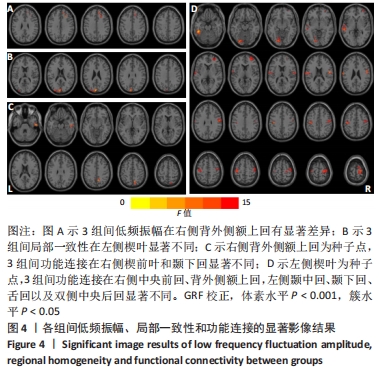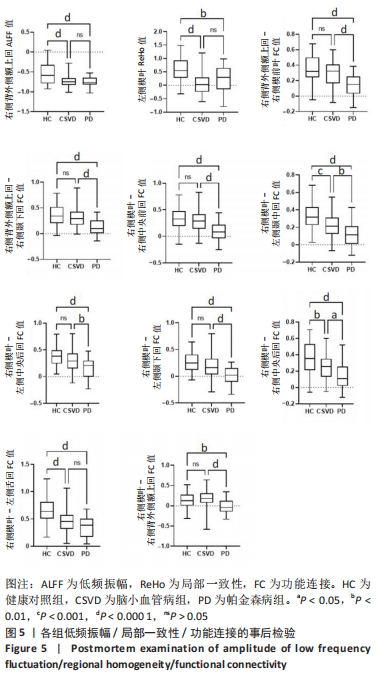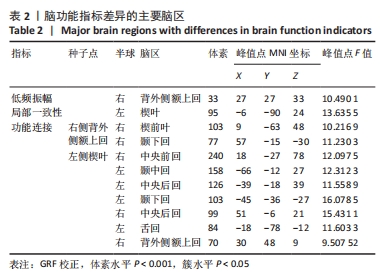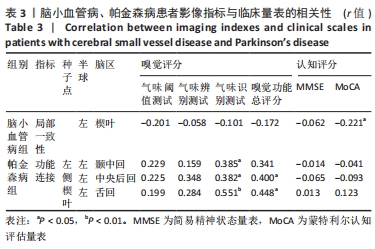[1] WARDLAW JM, SMITH EE, BIESSELS GJ, et al. Neuroimaging standards for research into small vessel disease and its contribution to ageing and neurodegeneration. Lancet Neurol. 2013;12(8):822.
[2] IADECOLA C, DUERING M, HACHINSKI V, et al. Vascular Cognitive Impairment and Dementia: JACC Scientific Expert Panel. J Am Coll Cardiol. 2019;73(25):3326.
[3] BOGOLEPOVA AN. Sosudistye kognitivnye narusheniya [Vascular cognitive impairment]. Zh Nevrol Psikhiatr Im S S Korsakova. 2022; 122(10):17-23.
[4] ROSENBERG GA, WALLIN A, WARDLAW JM, et al. Consensus statement for diagnosis of subcortical small vessel disease. J Cereb Blood Flow Metab. 2016;36(1):6-25.
[5] PENG D; Geriatric Neurology Group, Chinese Society of Geriatrics; Clinical Practice Guideline for Cognitive Impairment of Cerebral Small Vessel Disease Writing Group. Clinical practice guideline for cognitive impairment of cerebral small vessel disease. Aging Med (Milton). 2019;2(2):64-73.
[6] LAU AYL, IP BYM, KO H, et al. Pandemic of the aging society - sporadic cerebral small vessel disease. Chin Med J (Engl). 2021;134(2):143-150.
[7] MURPHY C. Olfactory and other sensory impairments in Alzheimer disease. Nat Rev Neurol. 2019;15(1):11-24.
[8] SLABIK D, GARASCHUK O. Olfactory dysfunction as a common biomarker for neurodegenerative and neuropsychiatric disorders. Neural Regen Res. 2023;18(5):1029-1030.
[9] TOLOSA E, GARRIDO A, SCHOLZ SW, et al. Challenges in the diagnosis of Parkinson’s disease. Lancet Neurol. 2021;20(5):385-397.
[10] CAMARGO CHF, JOBBINS VA, SERPA RA, et al. Association between olfactory loss and cognitive deficits in Parkinson’s disease. Clin Neurol Neurosurg. 2018;173:120-123.
[11] SUI X, ZHOU C, LI J, et al. Hyposmia as a Predictive Marker of Parkinson’s Disease: A Systematic Review and Meta-Analysis. Biomed Res Int. 2019;2019:3753786.
[12] SU M, WANG S, FANG W, et al. Alterations in the limbic/paralimbic cortices of Parkinson’s disease patients with hyposmia under resting-state functional MRI by regional homogeneity and functional connectivity analysis. Parkinsonism Relat Disord. 2015;21(7):698-703.
[13] ROH H, KANG J, KOH SB, et al. Hippocampal volume is related to olfactory impairment in Parkinson’s disease. J Neuroimaging. 2021; 31(6):1176-1183.
[14] GEORGIOPOULOS C, WITT ST, HALLER S, et al. A study of neural activity and functional connectivity within the olfactory brain network in Parkinson’s disease. Neuroimage Clin. 2019;23:101946.
[15] WALKER IM, FULLARD ME, MORLEY JF, et al. Olfaction as an early marker of Parkinson’s disease and Alzheimer’s disease. Handb Clin Neurol. 2021;182:317-329.
[16] BARRETT MJ, MURPHY JM, ZHANG J, et al. Olfaction, cholinergic basal forebrain degeneration, and cognition in early Parkinson disease. Parkinsonism Relat Disord. 2021;90:27-32.
[17] GOLDSTEIN DS, HOLMES C, BENTHO O, et al. Biomarkers to detect central dopamine deficiency and distinguish Parkinson disease from multiple system atrophy. Parkinsonism Relat Disord. 2008;14(8):600-607.
[18] PAOLINI PAOLETTI F, SIMONI S, PARNETTI L, et al. The Contribution of Small Vessel Disease to Neurodegeneration: Focus on Alzheimer’s Disease, Parkinson’s Disease and Multiple Sclerosis. Int J Mol Sci. 2021; 22(9):4958.
[19] VISHNEVETSKY A, INCA-MARTINEZ M, MILLA-NEYRA K, et al. The First Report of CADASIL in Peru: Olfactory Dysfunction on Initial Presentation. eNeurologicalSci. 2016;5:15-19.
[20] SUH KD, KIM SM, HAN DH, et al. Olfactory Function Test for Early Diagnosis of Vascular Dementia. Korean J Fam Med. 2020;41(3):202-204.
[21] 高文鑫,刘华琼,许昌. 静息态功能磁共振在CSVD认知障碍中的研究进展[J]. 影像技术,2022,34(6):61-65.
[22] 中国研究型医院学会脑小血管病专业委员会,《中国脑小血管病诊治专家共识》编写组, 胡文立,等. 中国脑小血管病诊治专家共识2021[J]. 中国卒中杂志,2021,16(7):716-726.
[23] 周雯,毋愚力,陈科璞. 一种气味呈现工具及其嗅觉测试与训练工具[P]. CN211131007U, 2020-07-31.
[24] CHAO-GAN Y, YU-FENG Z. DPARSF: A MATLAB Toolbox for “Pipeline” Data Analysis of Resting-State fMRI. Front Syst Neurosci. 2010;4:13.
[25] BATHINI P, BRAI E, AUBER LA. Olfactory dysfunction in the pathophysiological continuum of dementia. Ageing Res Rev. 2019;55: 100956.
[26] CHEN B, WANG Q, ZHONG X, et al. Structural and Functional Abnormalities of Olfactory-Related Regions in Subjective Cognitive Decline, Mild Cognitive Impairment, and Alzheimer’s Disease. Int J Neuropsychopharmacol. 2022;25(5):361-374.
[27] DU BOISGUEHENEUC F, LEVY R, VOLLE E, et al. Functions of the left superior frontal gyrus in humans: a lesion study. Brain. 2006;129(Pt 12): 3315-3328.
[28] FENG M, WEN H, XIN H, et al. Altered Spontaneous Brain Activity Related to Neurologic Dysfunction in Patients With Cerebral Small Vessel Disease. Front Aging Neurosci. 2021;13:731585.
[29] 刘婷, 郭晓鹏, 李丽娟, 等. 卒中后早期认知下降患者默认模式网络和执行控制网络改变的功能磁共振成像研究[J]. 中华老年心脑血管病杂志,2022,24(11):1164-1168.
[30] SUN Y, HU Y, QIU Y, et al. Characterization of white matter over 1-2 years in small vessel disease using MR-based quantitative susceptibility mapping and free-water mapping. Front Aging Neurosci. 2022;14:998051.
[31] DISBROW EA, SIGVARDT KA, FRANZ EA, et al. Movement activation and inhibition in Parkinson’s disease: a functional imaging study. J Parkinsons Dis. 2013;3(2):181-192.
[32] ZHU H, ZHU H, LIU X, et al. Alterations of Regional Homogeneity in Parkinson’s Disease: A Resting-State Functional Magnetic Resonance Imaging (fMRI) Study. Cureus. 2022;14(7):e26797.
[33] AZAMAT S, BETUL ARSLAN D, ERDOGDU E, et al. Detection of visual and frontoparietal network perfusion deficits in Parkinson’s disease dementia. Eur J Radiol. 2021;144:109985.
[34] YUAN X, HAN Y, WEI Y, et al. Regional homogeneity changes in amnestic mild cognitive impairment patients. Neurosci Lett. 2016;629:1-8.
[35] FAN W, LI H, LI H, et al. Association between Functional Connectivity of Entorhinal Cortex and Olfactory Performance in Parkinson’s Disease. Brain Sci. 2022;12(8):963.
[36] YONEYAMA N, WATANABE H, KAWABATA K, et al. Severe hyposmia and aberrant functional connectivity in cognitively normal Parkinson’s disease. PLoS One. 2018;13(1):e0190072.
[37] DINTICA CS, MARSEGLIA A, RIZZUTO D, et al. Impaired olfaction is associated with cognitive decline and neurodegeneration in the brain. Neurology. 2019;92(7):e700-e709.
[38] TAN Z, WANG Y, LU H, et al. The Effects of Brain Magnetic Resonance Imaging Indices in the Association of Olfactory Identification and Cognition in Chinese Older Adults. Front Aging Neurosci. 2022;14: 873032.
[39] TIAN Q, AN Y, KITNER-TRIOLO MH, et al. Associations of Olfaction With Longitudinal Trajectories of Brain Volumes and Neuropsychological Function in Older Adults. Neurology. 2023;100(9):e964-e974.
[40] TIAN Q, BILGEL M, MOGHEKAR AR, et al. Olfaction, Cognitive Impairment, and PET Biomarkers in Community-Dwelling Older Adults. J Alzheimers Dis. 2022;86(3):1275-1285.
[41] DADAR M, GEE M, SHUAIB A, et al. Cognitive and motor correlates of grey and white matter pathology in Parkinson’s disease. Neuroimage Clin. 2020;27:102353.
[42] SCAMARCIA PG, AGOSTA F, SPINELLI EG, et al. Longitudinal White Matter Damage Evolution in Parkinson’s Disease. Mov Disord. 2022; 37(2):315-324.
[43] MASALA C, CAVAZZANA A, SANNA F, et al. Correlation between olfactory function, age, sex, and cognitive reserve index in the Italian population. Eur Arch Otorhinolaryngol. 2022;279(10):4943-4952. |
